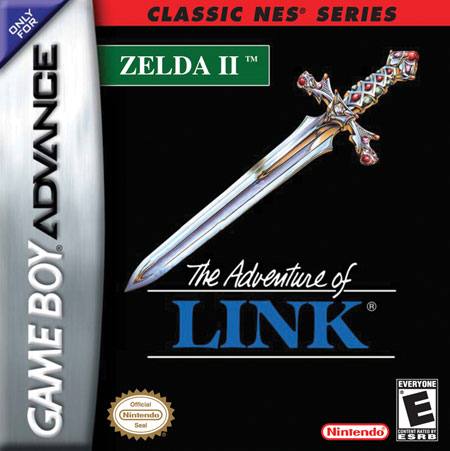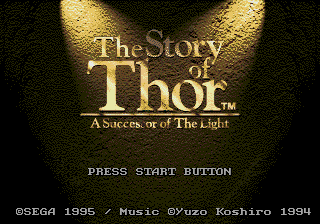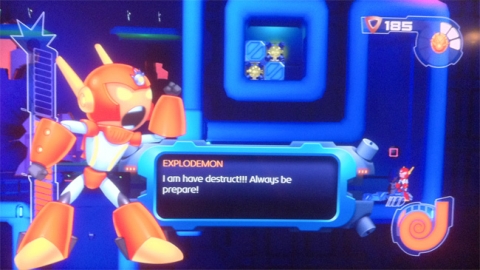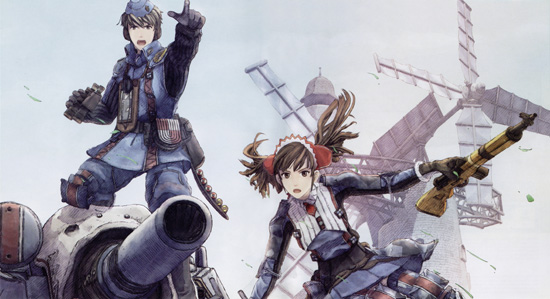Posted Monday, 18th July 2011 under Retrospective game reviews
Comments Off on Reviewing… Secret of Evermore (SNES)
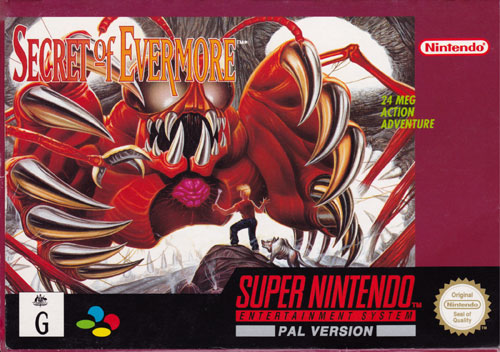
Secret of Evermore is a curious beast. At release it caused a stir amongst the press and the wider gaming community for (a) not being a true sequel to Secret of Mana and (b) taking the role of the scapegoat in light of Seiken Densetsu 3 being skipped for localisation in the West. While time has allow that last point to be corrected, it has also allowed the dust to settle so that the game can be experienced free from the enthusiasm the Seiken Densetsu franchise traditionally emanated (which in itself is a relic given the downward trajectory of the franchise in a post-16-bit world).
Back in 1996 when my younger brother and I finally joined the SNES bandwagon, a handful of games kicked-off the collection – Killer Instinct (no laughing!) and Secret of Mana, closely followed by Super Mario Allstars, Super Mario World then Zelda. Knowing my gaming habits, I would have picked up Secret of Evermore some time between May and September (thanks to Retro Gaming Australia for the reference – Secret of Evermore received a score of 92% in the April 1996 issue of Hyper), given the release date of April-ish (with a few exceptions, back in the mid-90s we didn’t really have release dates) and my historic purchase of a Sega Saturn in September (yes, it’s historic, even if it’s only in my head). After enjoying Secret of Mana (who wouldn’t?), picking up Secret of Evermore was a no-brainer. What eventuated out of that purchase though, was a bit of an anomally. The UI and a large portion of the game mechanics were familiar, but the premise was a little different and the presentation (audio and visuals) was certainly a departure from its namesake prequel.
1996-Sean didn’t really let this bother him – the game in some ways was disappointing, as it lacked a persistent connection with the familiar world of Secret of Mana, lacked polish, didn’t seem quite as broad in scope and the multiplayer was sorely missed. On the flip-side, the music was great, the locales were certainly interesting and some of the mechanics were well-implemented. The story also made a bit more sense, though this is easy to identify retrospectively given it’s now much more common knowledge that Secret of Mana suffered from being abruptly hacked together in light of the Super CD falling by the wayside, and the ongoing issues with space and programming logic inherent to localising 16-bit JRPGs.
From a historical perspective then, the game was enjoyed and appreciated, but ultimately fell shy of filling the impressive shoes left in the wake of Secret of Mana.
So what does 2011-Sean think of the game?
For me, it was an altogether different experience. It had been over 15 years since I last fired up the game, and in that time a lot has happened. Aside from getting older and having less hair on my head, we’ve had the internet come in and fill the gaps around the game’s genesis, development and its place amongst other Square RPGs of the time. Seiken Densetsu 3 has been unofficially translated, which means the blind faithful (like yours truly) can sup at the table Square denied us in 1996. There has been distance gained beyond the various threads spun of rampant fanboyism that only the changing guard of 1996 could have produced.
Perspective, as it is, continues to be an interesting creature, and in the context of this review, has made Secret of Evermore a better game.
The soundtrack continues to impress despite its differences in thematic composition to Kikuta’s soundtrack in Secret of Mana. Especially worthy of note is its progressive implementation of atmospheric noise in place of background music during some key areas (Hardcore Gaming 101’s excellent thoughtpiece lists a few poignant examples). The game looks far less “squishy” now that I can play the game in 60hz, it controls well, the worlds are imaginative, and alchemy is fun when you get your head around it. I even enjoyed the collect-a-thon in the markets, though I admit to seeking some help from GameFAQs on that one to clear things up.
I’m not saying the game isn’t flawed – it is, but it doesn’t mean the game is any less endearing. The writing is a little hokey, but at least it isn’t the fragmented mess that was Secret of Mana and there are some nice (predictable) spins in the narrative. The graphics teeter between very good and drab depending on the world you’re playing in – world three is an example of the good, while the swamps in world one float the other way. Multiplayer continues to be a sticking point, but I appreciated the functionality offered by the dog in tracking down ingredients this time, rather than sulking about the lack of multiplayer.
Even the game length was well balanced. There are a few spaces where tedium kicked in (such as the dessert in world 2 or the grinding required when levelling up your weapons), but it wasn’t enough to present a roadblock to progress. Being time-poor these days, it took about a month or so of casual play during weekends to finish up the game, which was perfect for me. The 60+ hour marathons common in later generations was thankfully absent, which for me is also part of the appeal of 16-bit JRPGs. Interestingly, the game length seemed pretty reasonable from 1996-Sean’s perspective, despite the price of entry – I don’t have the docket, but I’m pretty sure my (now-defunct) local independent game store charged $89 for the game, which equates to $128.23 today. Despite this, I don’t recall ever feeling short-changed by the game.
So, Secret of Evermore – flawed and often misunderstood, but ultimately a very solid game.
